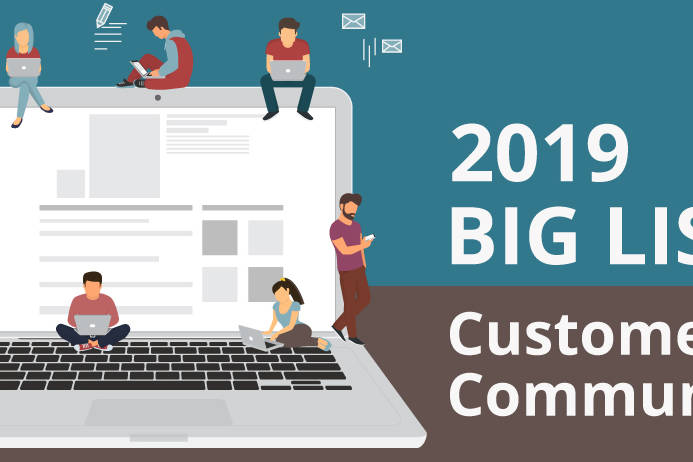You’re firm is getting the hang of becoming a socially enabled enterprise. No longer doing isolated skunk works social media projects, your firm got organized – strategic, in fact. You have a clear handle on your social media accounts, tools, metrics, a governance policy and even an escalation path if things go awry. This is quite an accomplishment for your organization and its leadership, as you are well on your way to becoming a socially enabled enterprise. But this is not the end of the journey; in fact it is just the beginning. The next big, exciting step is to create a social business center of excellence (COE).
Social business centers of excellence offer great value to larger organizations that have multiple digital initiatives and multiple lines of business. They harness best practices and create scale and efficiencies while enabling the lines of business to tailor their social strategies and tactics to their discrete, unique audiences. When well done, they offer the best of both worlds.
The first step to creating a social business COE is to gather a team of leaders from the various lines of business as well as representation from corporate communications and legal. This team becomes the foundation for setting the business direction for the COE and ensuring consensus. By involving a small team of stakeholders, you also ensure that the business needs are met across the board. But, as we all know, a leaderless crowd can quickly become a wandering mob. So it will be important to define a leader – the head of corporate communications often takes the helm- and a small support team who will be in charge of creating COE assets, defining goals and building operational efficiencies within the various business lines. A “hub-and spoke” model is most effective, where the implementation is lead by the business/s but the COE team is there to help, teach and codify best practices so they can used across the company.
In an interview with Don Bulmer, Vice President of Communication Strategy at Shell from The Socially Driven Collaboration research report 2013 (Oracle, Leader Networks, & Social Media Today), Don talks about his role as the Shell Social Business COE leadership:
“I look at my role more as an enabler than anything else. The only way you’re going to get true scale is by allowing people to have accountability for their efforts and ownership of their own programs, where they benefit. We’re able to then have a dialogue where they [business] see the benefits of working with our Center of Excellence because we give them data and information and context that allows them to be able to run with their programs benefiting from this platform that we’ve established. It’s one company, right? It’s one brand.”
Once you have assembled your social business round-table, the next step is to define an operating model for the COE. This will include defining the mission and vision of the COE, tools, content strategy, staffing, training, education and measures of success. While the objectives of each COE will vary by company, industry and mission, there is one thing that all COEs have in common and that is namely assuming the role of change agent. Social business is not a neutral endeavor as it has the potential to impact and alter the way organizations communicate and interact with its prospective and current customers, partners and employees. So, as with all change efforts, it is critical to define the nature of the change – we want to evolve from X to Y and to clearly define the path forward via a set of mini-milestones that lead to big impact. As I have been involved in many a social business COE development, the crawl-walk-run approach is always the best path to social business progress!
If you are interested in the topic, last week Social Media Today hosted a webinar entitled Social Organization: How Centers of Excellence, Collaborative Management and Seamless Enterprise Structures are Working. Along with Ekaterina Walter and Jessica Gioglio, we explored how to introduce the benefits of social business collaboration to your company, Turn informal collaboration into disciplined strategy to reach business goals and how to choose the right social platform to motivate participation from employees, customers, suppliers, vendors, contractors, and stakeholders.
Here are my slides from the session:
And for more nuggets of information, be sure to listen to the webcast here.
Warning: Attempt to read property "base" on array in /home3/trusten9/public_html/leadernetworks/wp-content/plugins/wp-user-profile-avatar/shortcodes/wp-user-profile-avatar-shortcodes.php on line 665
Warning: Attempt to read property "base" on array in /home3/trusten9/public_html/leadernetworks/wp-content/plugins/wp-user-profile-avatar/shortcodes/wp-user-profile-avatar-shortcodes.php on line 665
Warning: Attempt to read property "base" on array in /home3/trusten9/public_html/leadernetworks/wp-content/plugins/wp-user-profile-avatar/shortcodes/wp-user-profile-avatar-shortcodes.php on line 665
Warning: Attempt to read property "base" on array in /home3/trusten9/public_html/leadernetworks/wp-content/plugins/wp-user-profile-avatar/shortcodes/wp-user-profile-avatar-shortcodes.php on line 665
Vanessa DiMauro
Internationally recognized independent thought leader on social business strategy and operations with a specialty in online community. I help organizations drive top line growth through innovative digital strategy design and thoughtful execution. I have successfully led 60+ strategic social business initiatives for the world's most influential organizations over my 20 years as a social business executive and serve on a number of boards. My award-winning track-record is fueled by passion, experience and research.
My work has been covered by leading publications such as the New York Times, the Wall Street Journal and CIO Magazine and was recently named a Social Marketing Master by Forbes. As a former Executive in Residence at Babson College, Olin School of Management, I am an engaging and informational educator and keynote speaker.
Related Posts
February 8, 2017
The Business Impact of Online Communities: New Study and Framework
Communities generate revenue, save money and advance competitive advantage.…
December 14, 2016
7 Digital Marketing Predictions for 2017
Predictions for digital transformation in 2017


